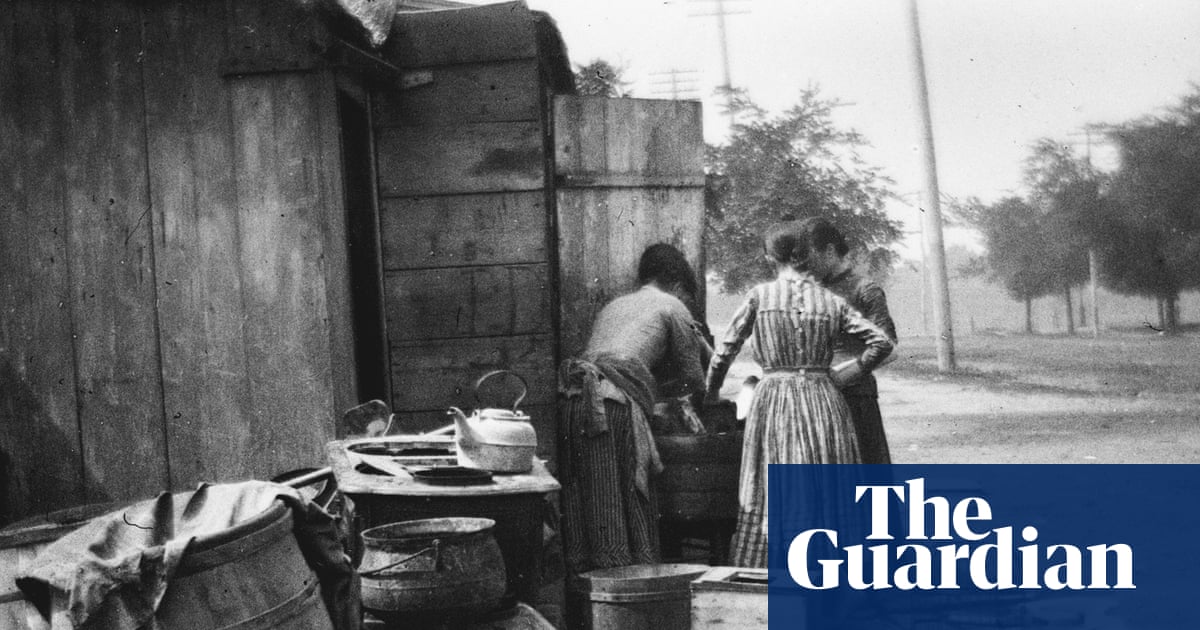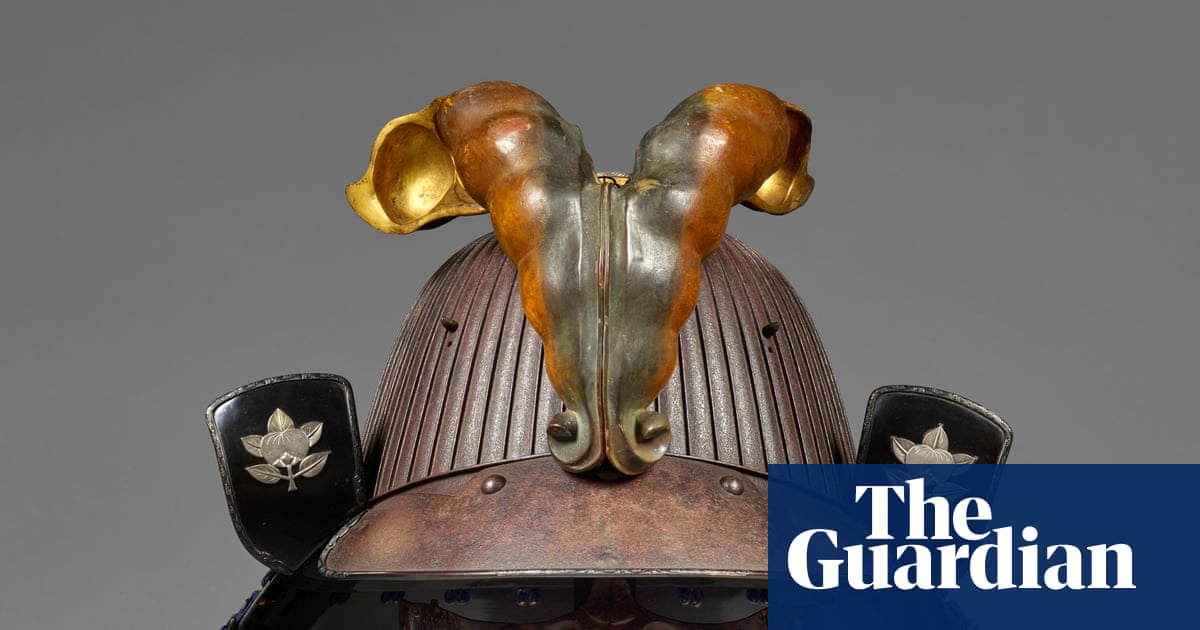Beer and cheese, two ingredients that don’t immediately scream soup to much of the world, are the cornerstones of one such midwestern speciality, particularly beloved in Wisconsin, with its prominent dairy and brewing industries. Beer soups are also found from Alsace to Russia (and, indeed, Wisconsin has a significant northern European heritage population). The cheese, however, appears to be an inspired American addition (though, seeing as Germany boasts both beer and cheese soups, I’m prepared to stand corrected), playing off the bittersweetness of the beer to produce a richly flavoured dish that’s perfectly suited to harsh midwestern winters. That said, it’s a treat on a cold day wherever you are.
(Note: this is not to be confused with German obatzda, while a thicker version is a popular hot dip in Kentucky, in particular.)
The base

Many recipes start with a classic sweated onion base, with Saveur magazine also adding shallot, while Wisconsin-native “photographer, author, stylist and farmer” (as she’s described in the Blasta Soup book) Imen McDonnell adds leek to the mix. Both of these contribute a pleasant sweetness that works well with the beer, but shallot always feels to me as if it has more of an affinity with wine-based dishes, while leek is a time-honoured pairing with cheese. Double down on that sweetness with the carrots used by Minnesota’s Amy Thielen and America’s Test Kitchen, which my testers and I prefer to the former’s red pepper (“Nice, but gives it more of a Tex-Mex vibe” – never mind that Thielen’s recipe comes from Minneapolis chef Steven Brown).
McDonnell also adds garlic and rosemary, and starts her soup off with bacon, scooping it from the pan to use as a garnish, and frying the vegetables in its fat. This is an excellent idea, not least for ramping up the savoury flavours, and also feels very American (if in doubt, add bacon), though butter or oil will also work if you’d prefer to keep things meat-free. (No doubt this could also be made with plant-based cheeses, which have come on leaps and bounds in recent years, but I haven’t tried it myself.)
The liquid

A soup made from beer alone is likely to be unpleasantly bitter, so it’s usual to cut it with stock (a neutral chicken is the most popular choice, but you could use Saveur’s vegetable variety, or the beef stock called for by Lizzie Kamenetzky in Winter Cabin Cooking, as included in Henrietta Clancy’s book Just Soup) and some sort of dairy. Thielen goes for half-and-half (a slightly thinner US single cream equivalent), and Kamenetzky and McDonnell with a finishing dash of double cream. Given the richness of the cheese, however, I’m inclined to agree with America’s Test Kitchen that “milk work[s] better than the usual cream and half-and-half, which are both heavy, even when cut with chicken broth”.
Beerwise, Bianca Valencia, Dee Laffan and Mei Chin, compilers of the Blasta Books Soup collection, write that McDonnell’s “ideal beer for this soup is Wisconsin’s Pabst Blue Ribbon, but it’s not easily available here in Ireland. We suggest substituting it with a lager or pilsner.” Thielen, meanwhile, favours “a mildly flavoured blonde or pale ale”, Kamenetzky lager or golden beer, and Saveur “ale”. My testers have a strong preference for mellower, American-style lagers here, as opposed to richer, hoppier blondes and pale ales, which can become bitter and cloying when heated.
That said, one should be able to taste the beer; it’s not here just for show, which is why McDonnell’s recipe is so clever. She adds half early on in the process, reducing it to concentrate the flavour, and the remainder near the end of the cooking time, so its freshness does’t get lost. (Teetotallers: alcohol-free lager ought to work just as well.)
The thickener
All the recipes use a roux, with the exception of Kamenetzky’s, which comes from the Swiss Valais region rather than the US, because the idea of bread as thickener intrigued me. She uses a rye loaf, which, when soaked in blonde beer, makes for a very strongly flavoured dish – if I made it again, I wouldn’t bother to puree it, because my testers struggled with the thick, porridge-like consistency; cubes of softened bread in a beery broth would be more akin to similar dishes I’ve eaten in the Italian Alps.
Most recipes suggest whizzing the soup until smooth, but, given the richness of the ingredients, my testers and I decide we prefer the chunkiness of McDonnell’s version, which feels less like drinking a fondue (she also stirs in steamed broccoli towards the end, which works wonderfully with the cheese; that said, it turns this into a slightly different dish, so I’ve left it out). Feel free to get your stick blender out if you’d prefer a silkier result, though I’m not sure elegance is what this dish aspires to.
The cheese

Cheddar is the most common choice – but beware! As America’s Test Kitchen explains, “low-moisture cheeses like flavourful aged cheddar are likely to break when melted – resulting in a grainy, greasy soup”. Their solution is to add American cheese, which “contains emulsifiers to promote melting”, but I find that as long as you stick to medium rather than mature varieties (which would, to my mind, be far too strong to consume in such quantity, anyway), add it slowly and don’t let the soup boil, there should be no issue with splitting, and thus no need for processed cheese or the cornflour ATK sprinkle in “to prevent clumping”.
As long as you steer clear of anything too hard and dry, you can play around with the mixture as you see fit: Kamenetzky uses raclette, McDonnell a little smoked cheddar, while Saveur crumbles gorgonzola on top to serve (personally, the last feels like a cheese too many, but perhaps I’m being too British).
The seasonings
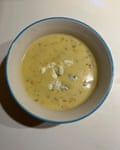
The Saveur magazine editors’ book of Soups and Stews (from 2015, when they still published both a print magazine and books) seasons the soup with caraway seeds, which feels like a nod to Bavarian obatzda, and works brilliantly with the beer – I’ve also added a pinch of sweet paprika for both its colour and gentle warmth, and McDonnell’s mustard powder for the same reason. If you’re not keen on caraway, we also very much enjoyed the thyme used by many recipes.
Fans of Welsh rarebit should take a look at Thielen’s recipe in her book The New Midwestern Table, which I picked up on a visit to Chicago many years ago when I realised how little I knew about the cuisine of this vast swathe of the States. Seasoned with nutmeg, dijon mustard, Worcestershire sauce and hot sauce, it feels a lot like toast in a bowl, topped with a jaunty dash of peppery mustard oil.
Serving suggestions
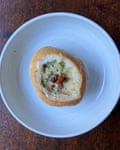
“The best way to showcase this American beauty? In a bread bowl, of course,” McDonnell writes. Individual crusty rolls mean you don’t have to all hunch around one large boule clashing spoons and resolving finally to book that flu jab. Chives are my garnish of choice with cheese. You could make this ahead of time up to the point when you add the milk, and then very gently reheat it before adding the cheese, though you might need a splash of extra stock or milk to loosen it.
Perfect beer cheese soup
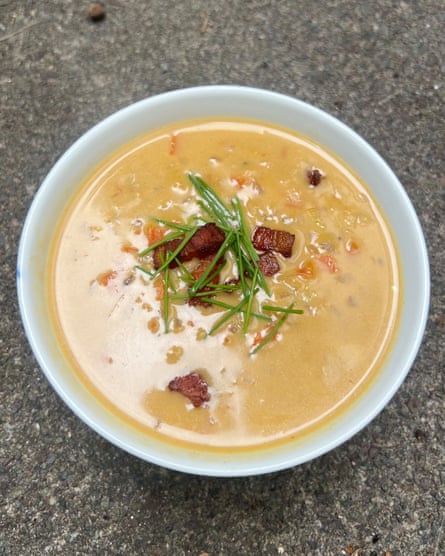
Prep 10 min
Cook 30 min
Serves 4
2 tbsp butter, or oil
100g bacon lardons (optional)
1 medium onion, peeled and finely chopped
1 medium carrot, trimmed and finely diced
1 medium leek, trimmed and very finely sliced
1 tsp caraway seeds, lightly crushed
½ tsp sweet paprika
230ml American-style lager
400ml chicken or vegetable stock
1 tbsp flour
1 tbsp mustard powder
175ml milk
200g medium cheddar, grated
4 crusty bread rolls, insides hollowed out and saved for breadcrumbs (optional)
Chopped chives, to serve
Melt half the fat in a medium saucepan, then fry the bacon, if using, on a medium heat until golden and crisp. Scoop out using a slotted spoon, and set aside.
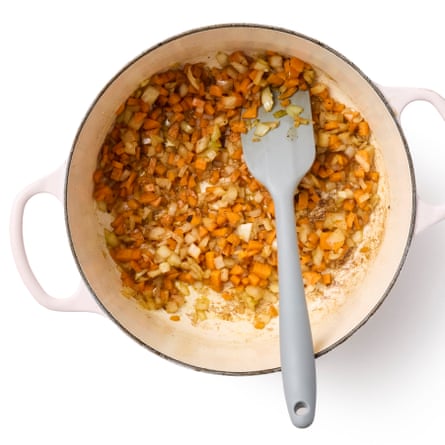
Add the onion and carrot to the hot fat in the pan and fry, stirring regularly, until they’re beginning to soften. Stir in the sliced leek and continue until wilted.

Add the caraway seeds and paprika, fry for another minute, then pour in half the beer and bring to a simmer. Leave to bubble away for about five minutes, until reduced by roughly half, then add the stock and bring to a simmer.
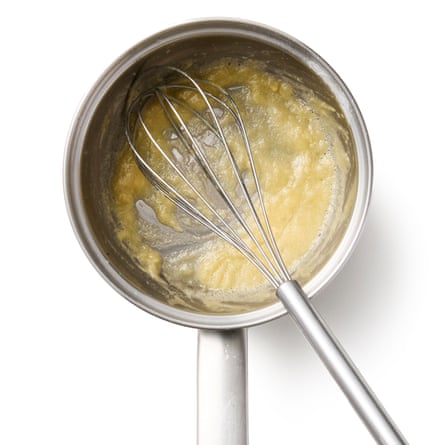
Meanwhile, melt the remaining fat in a small pan on a medium-low heat, then stir in the flour to make a paste. Fry for a couple of minutes, until golden, then stir in the mustard powder. Gradually whisk in the milk, until you have a smooth liquid. Stir the milk mixture into the soup, add the remaining beer and bring to a simmer. Cook on a medium-low heat, stirring regularly, until the soup thickens.
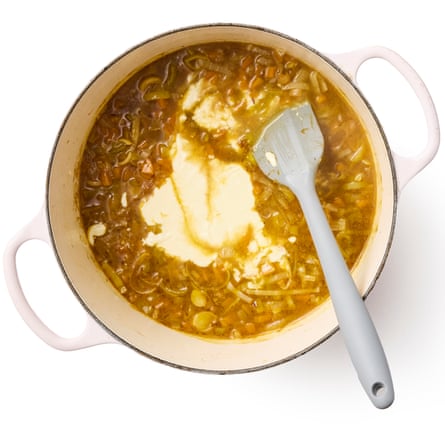
Turn the heat right down and add the cheese a little at a time, stirring in each batch until it’s melted before adding the next. Taste and adjust the seasoning.
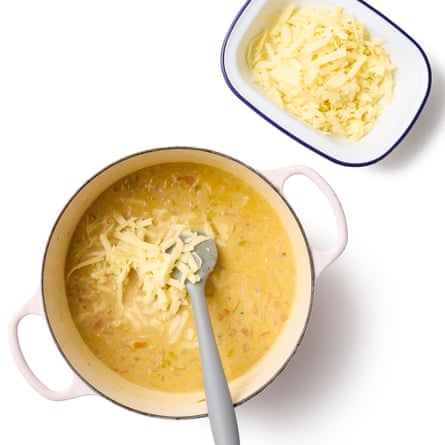
Divide the soup between bowls (or hollowed-out bread rolls), sprinkle with chopped chives and the reserved bacon, and serve.
-
Beer cheese soup: a Wisconsin original or a dish with European roots? What are your top tips, and which other midwestern classics deserve to be better known?

.png) 2 hours ago
4
2 hours ago
4
